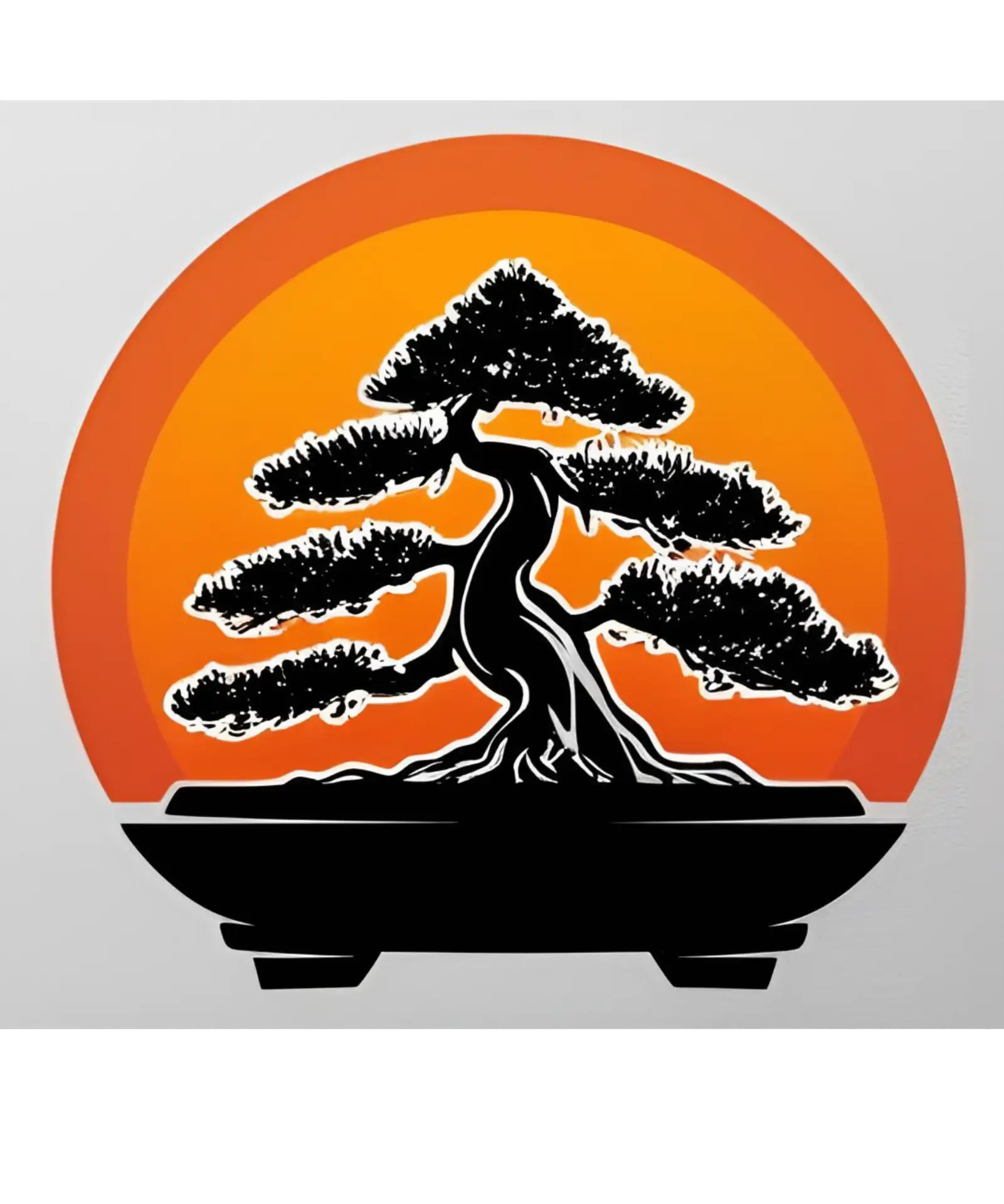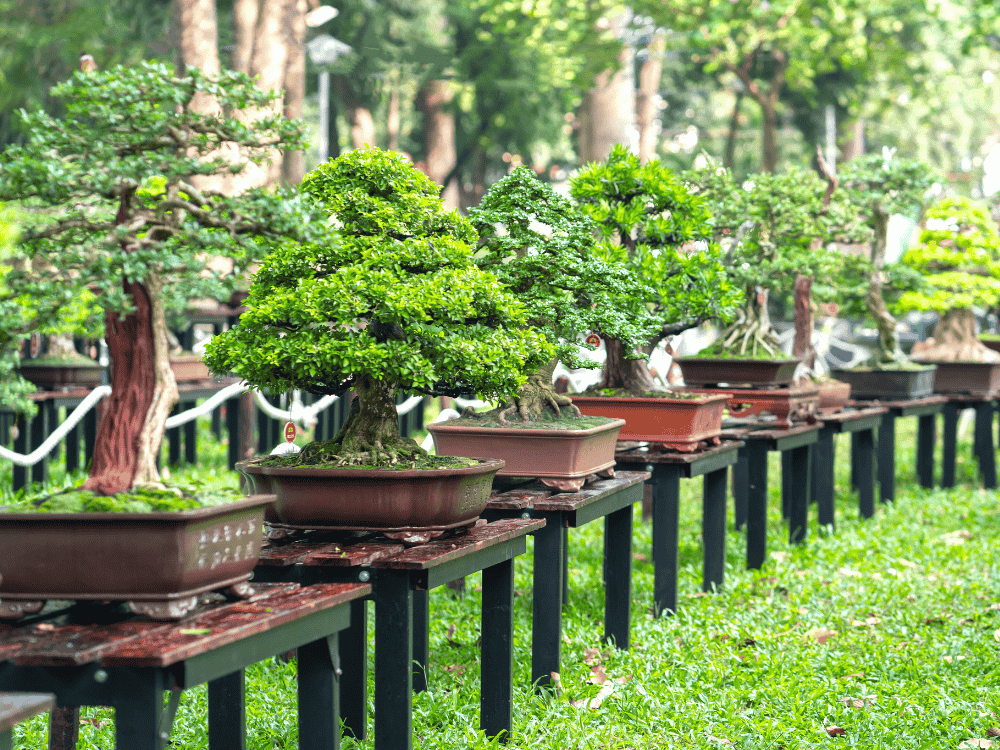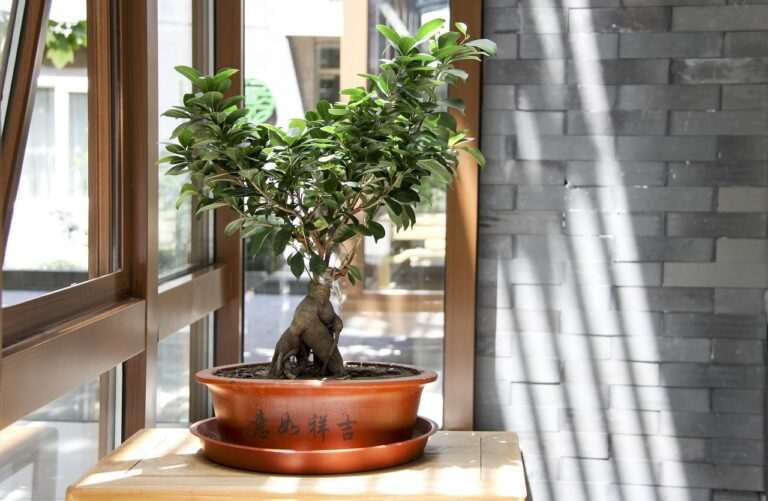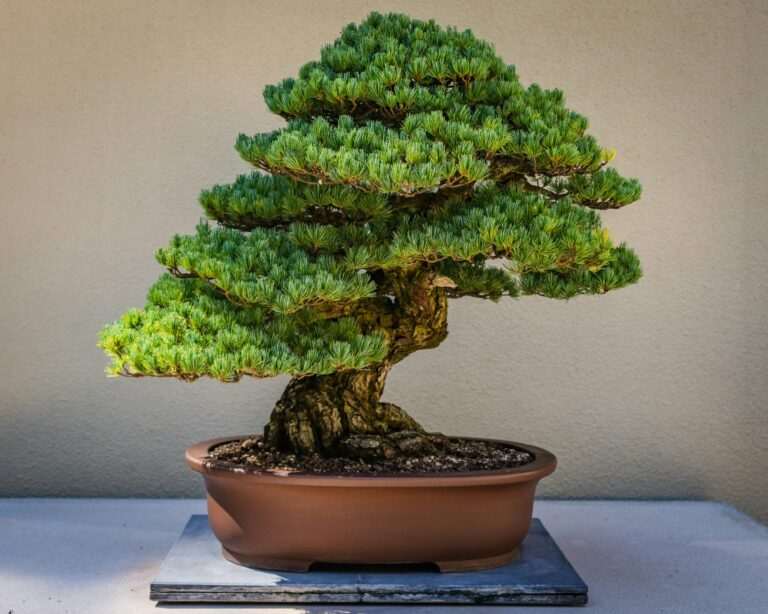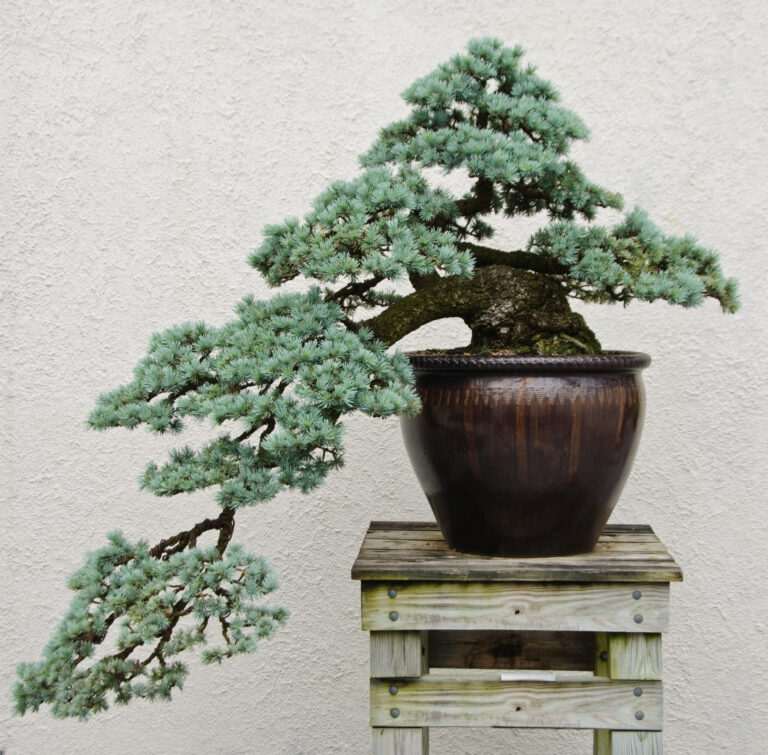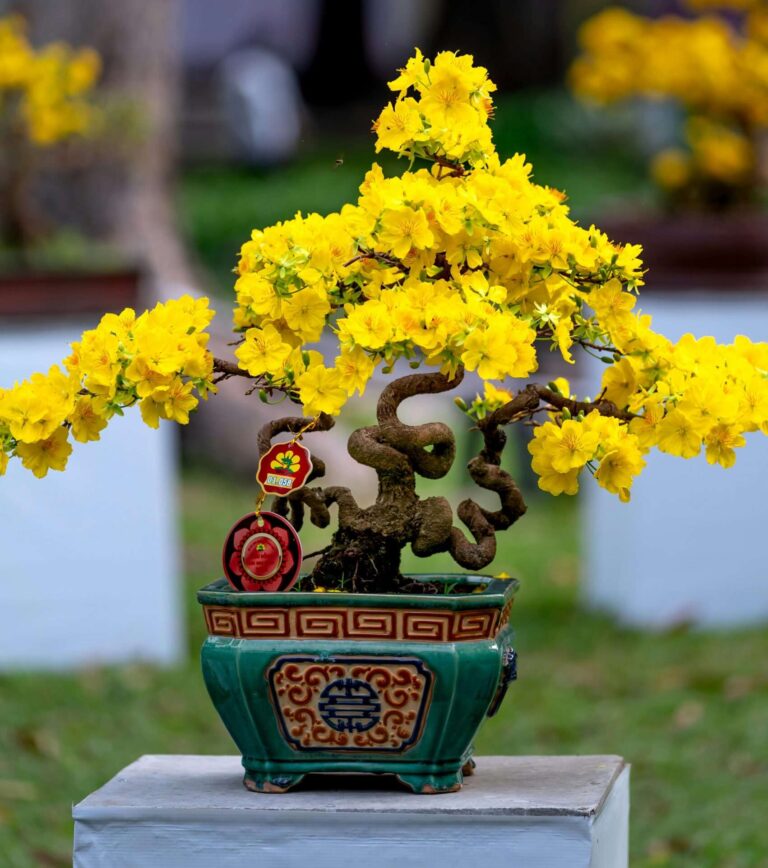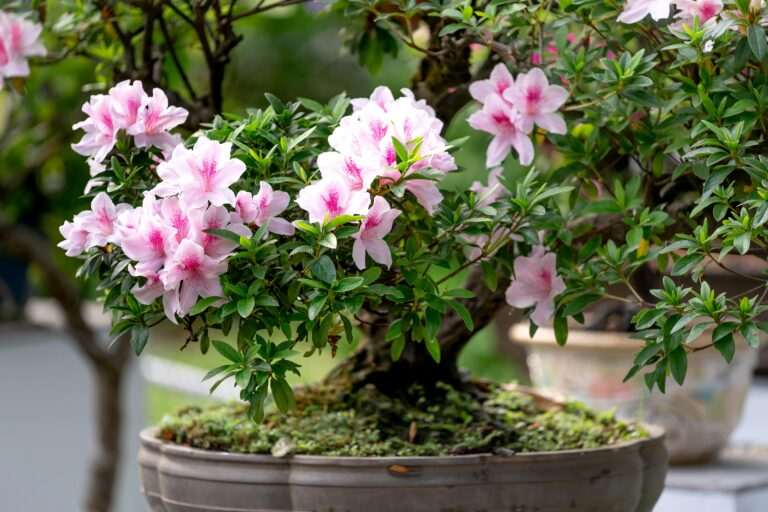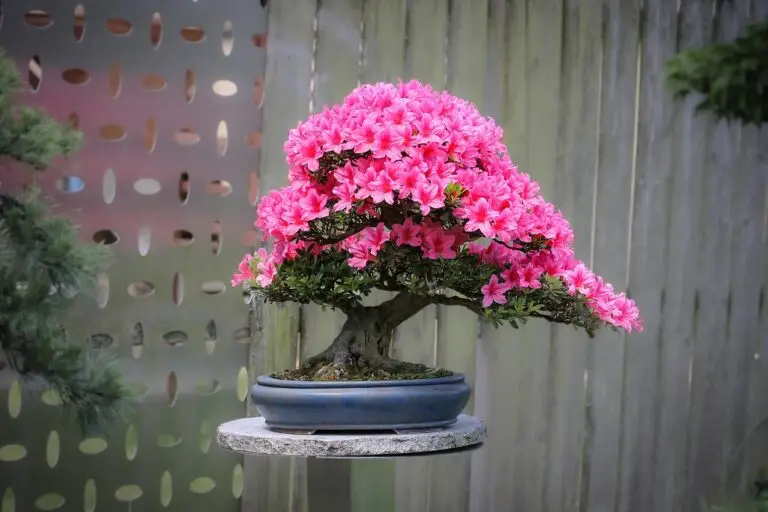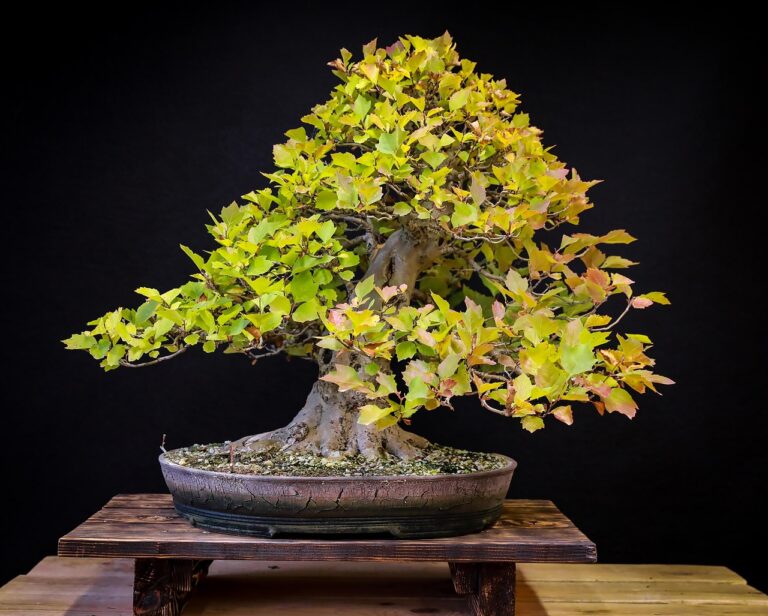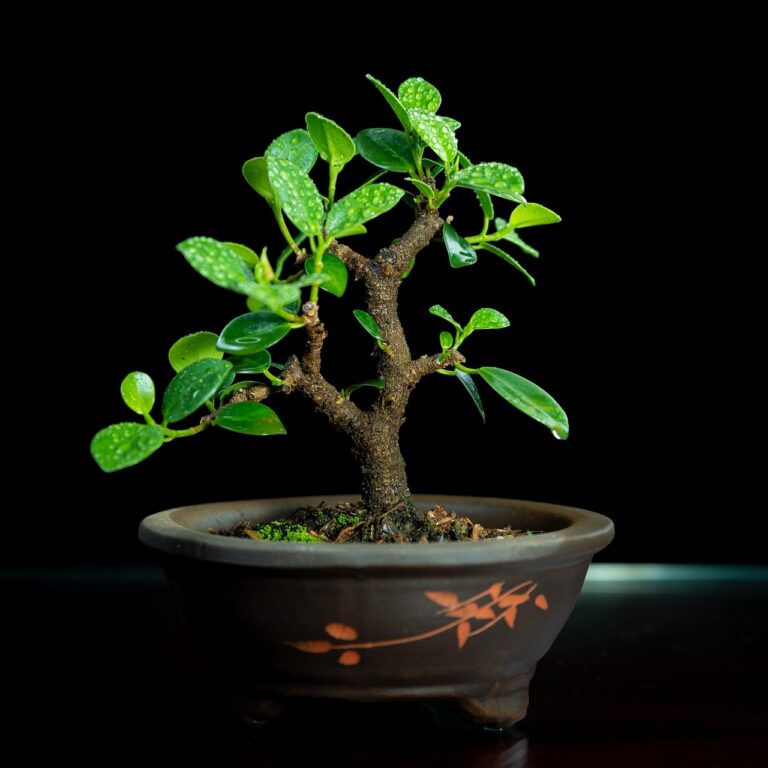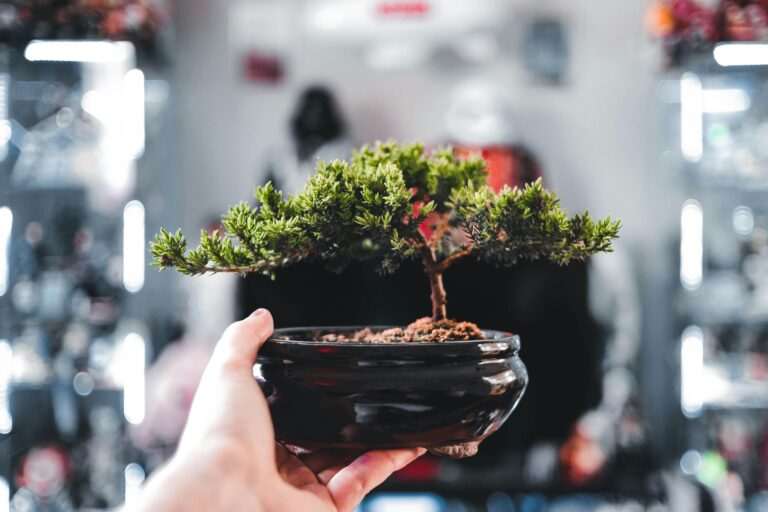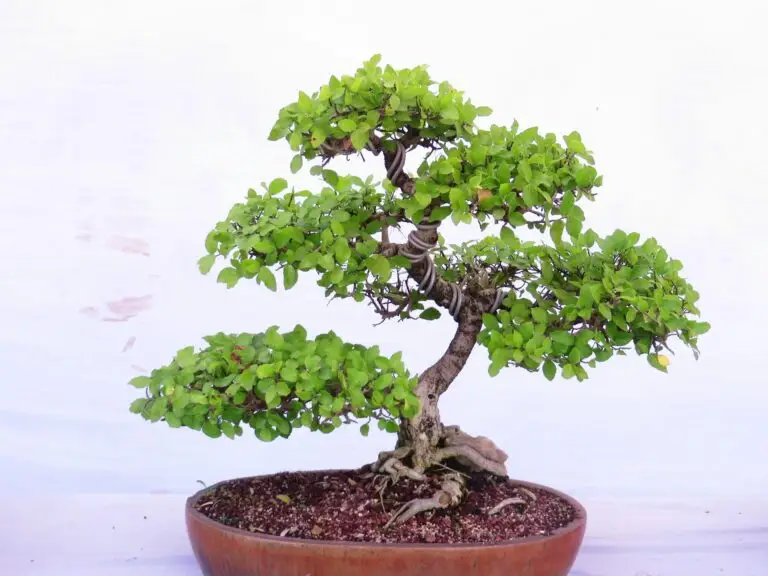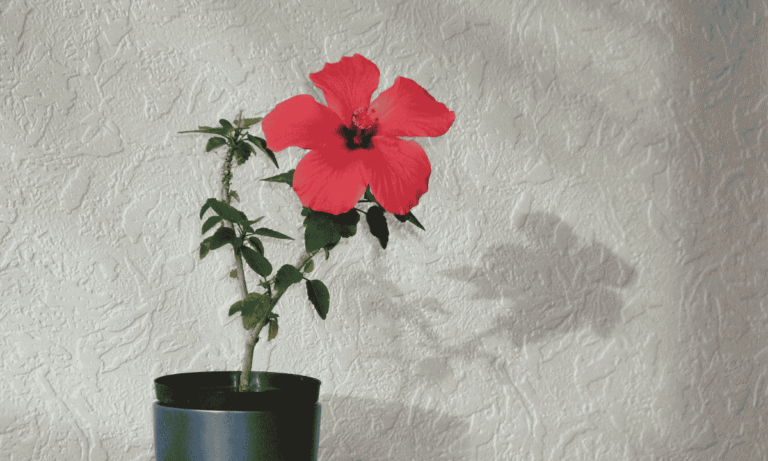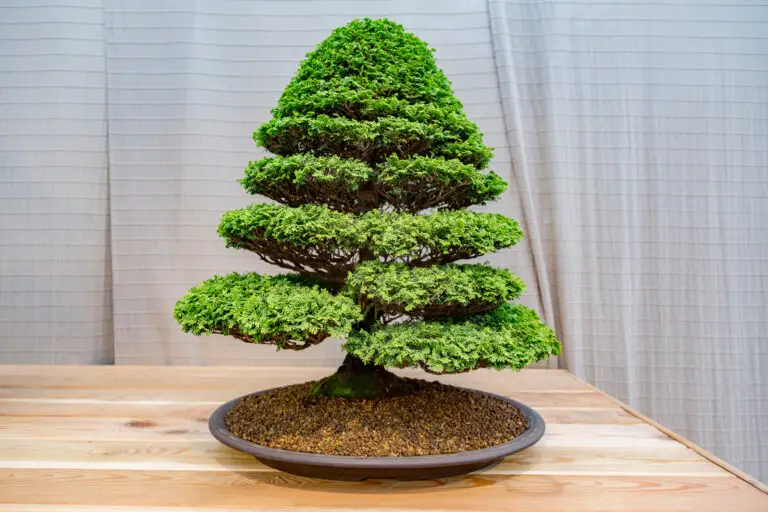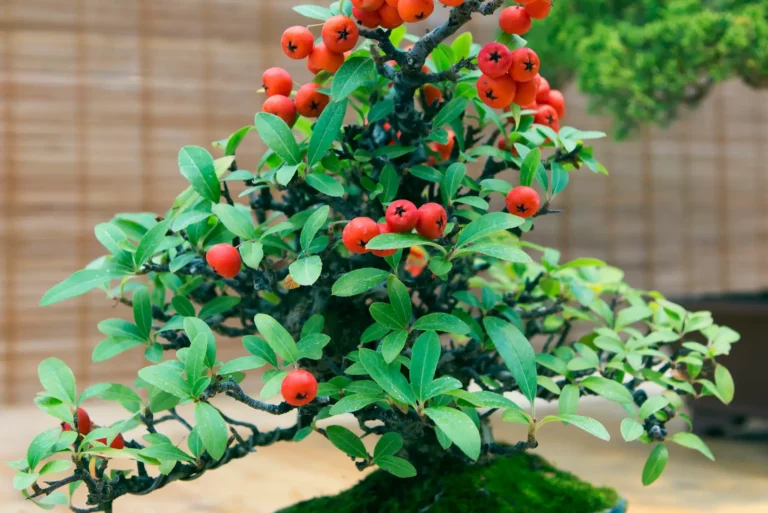Related Articles
21 Popular Types of Bonsai Trees by Master Mori.
Ah, so… you wish to walk the path of bonsai. A noble journey. Some seek fame. Others fortune. But you? You seek foliage. A tree in a pot, and peace in the soul. Let Master Mori be your humble guide.
Today, we explore 25 types of bonsai trees. Each with its own charm, challenges, and quiet teachings. Whether you’re just beginning or have already killed a few trees (no shame, young sapling), there’s a species here for you.
Download Master Mori’s free beginner’s guide, your first tree will thank you
Let us begin.
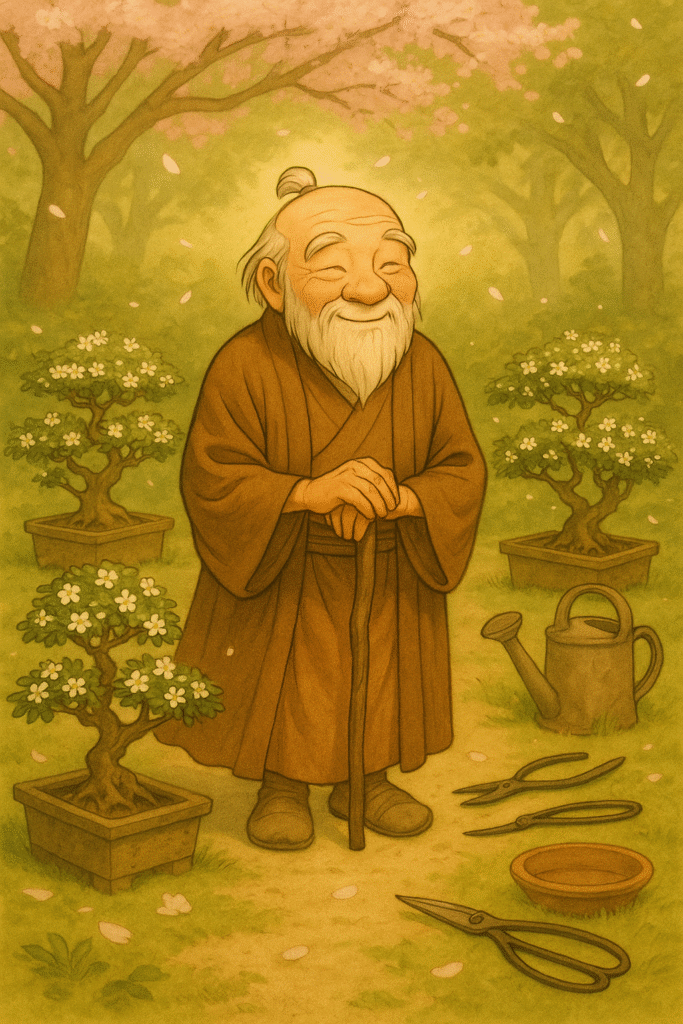
Types of Bonsai Trees Overview
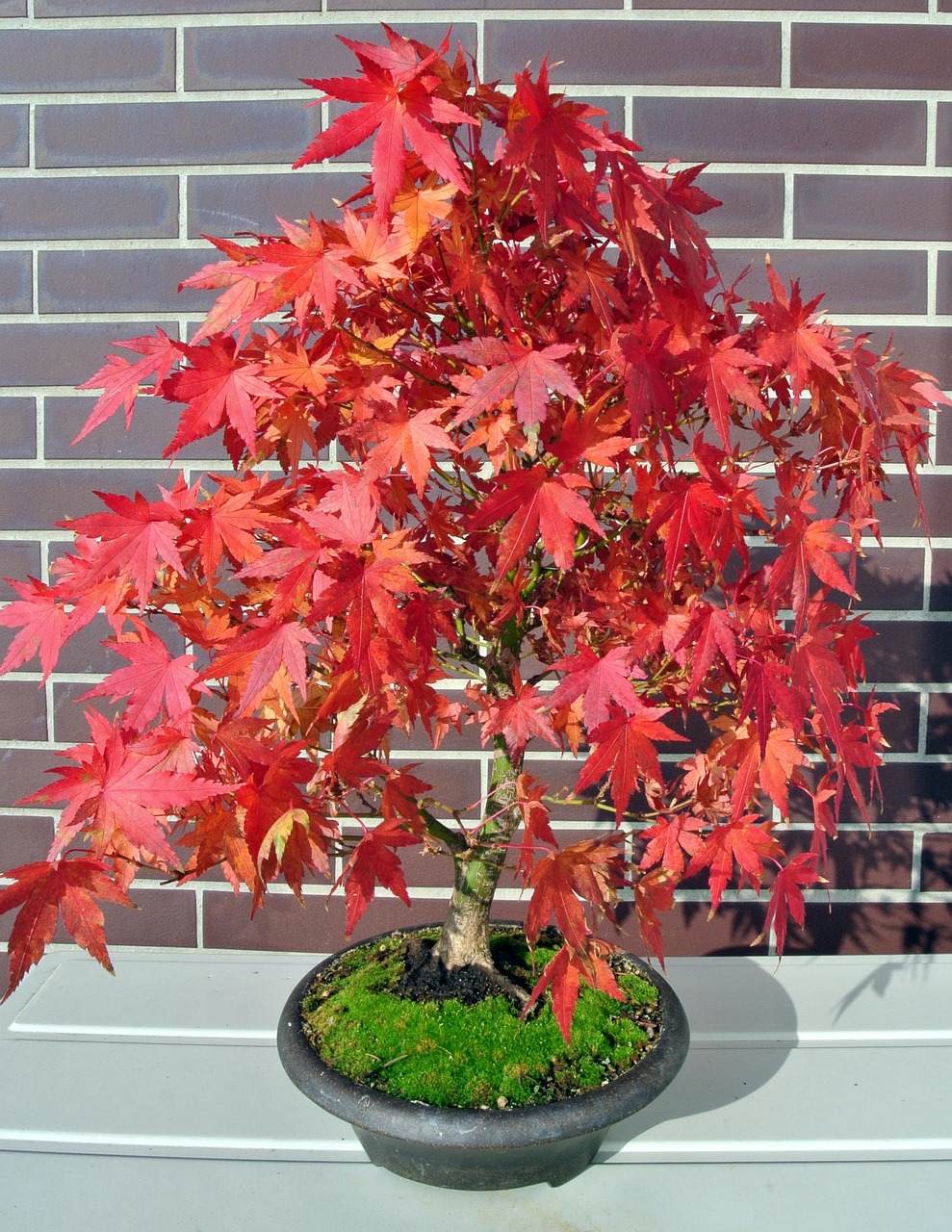
1. Japanese Maple (Acer palmatum)
Graceful. Elegant. A tree that teaches patience. Its leaves blush red in autumn, reminding us that change can be beautiful.
Intro: Among the most beloved types of bonsai trees, the Japanese Maple stands out for its seasonal colour and delicate structure. If you’re just stepping onto the bonsai path, it’s a poetic place to begin. With vivid autumn transitions and a calm presence, it’s a favourite in many beginner bonsai collections. Make sure your care approach is grounded in good soil choices — our Bonsai Soil Mix Guide will point you in the right direction.
Watering: Likes consistent moisture but dislikes soggy roots.
Lighting & Climate: Best grown outdoors in temperate climates with morning sun and dappled afternoon shade.
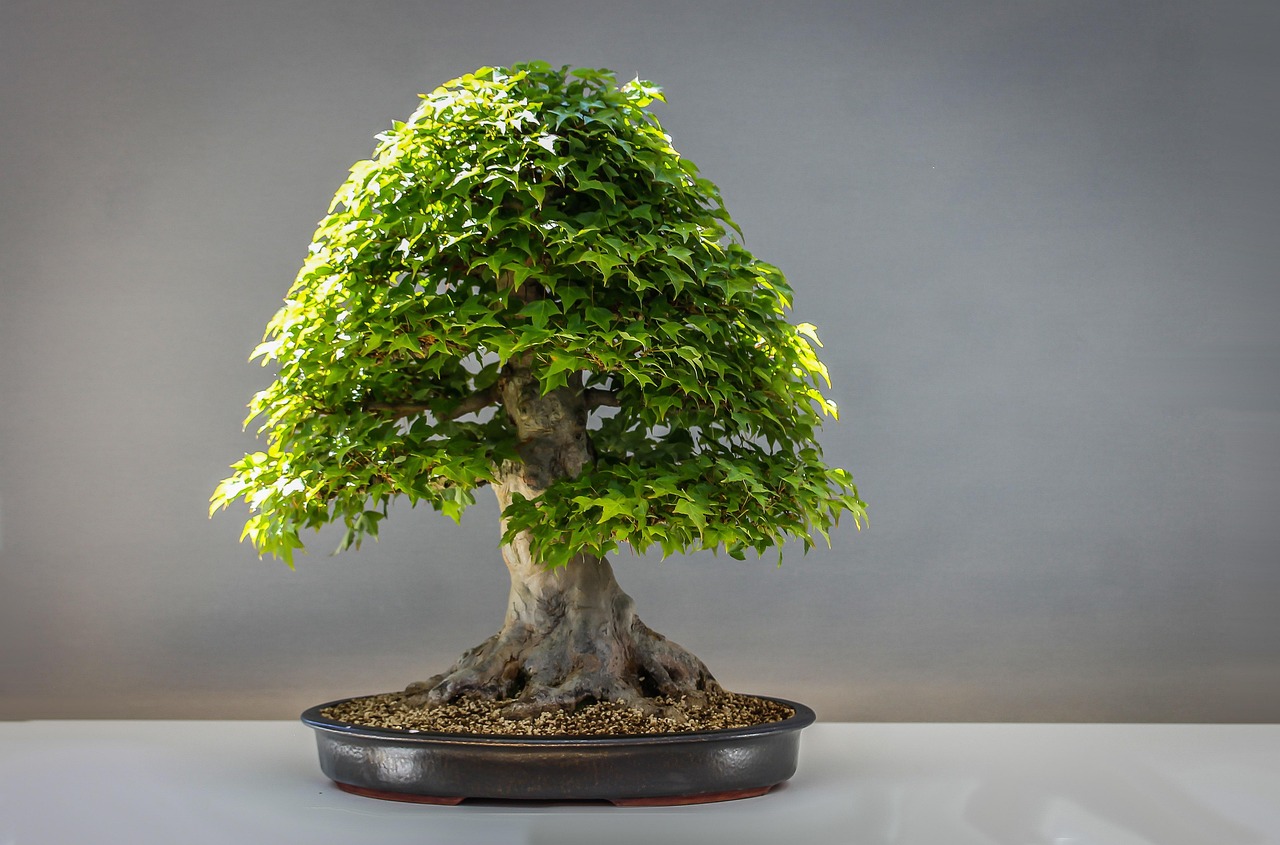
2.Trident Maple (Acer buergerianum)
A little tougher than its cousin, the Trident puts out roots like a samurai plants his stance, firm and bold.
Intro: Trident Maples are one of the more rugged types of bonsai trees, they are sturdy, photogenic option for growers who enjoy dynamic styles like root-over-rock. Pair it with the right bonsai pot and you’ll have a showpiece tree full of character. Learn more about styling decisions in our Bonsai Pruning Guide.
Watering: Requires regular watering, especially during summer.
Lighting & Climate: Ideal for outdoor growing in mild to warm temperate climates.
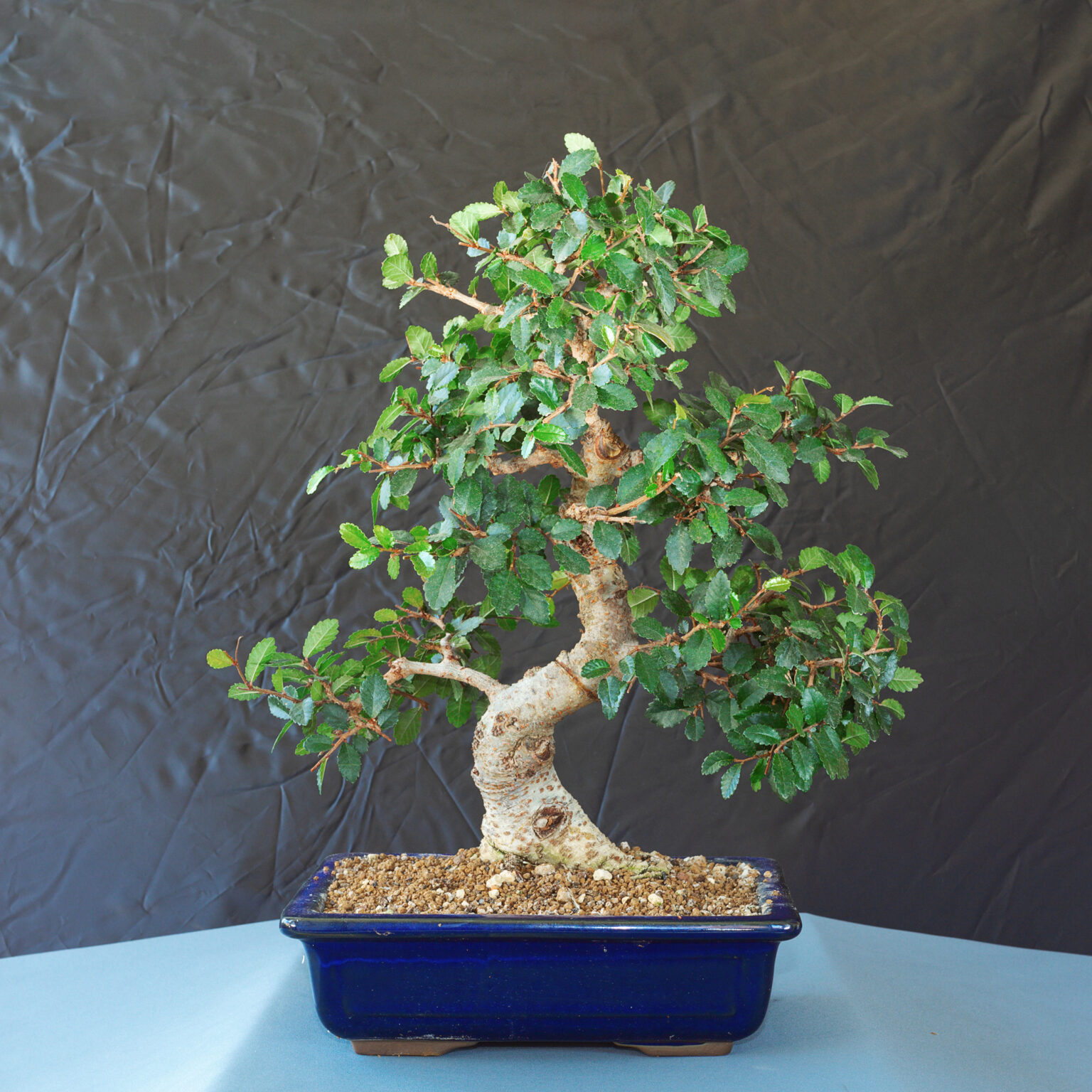
3.Chinese Elm (Ulmus parvifolia)
Ah, the people’s champion! Tough, forgiving, and wonderfully twiggy.
Intro: The Chinese Elm is ideal for bonsai students who want both beauty and flexibility. It’s also one of the best types of bonsai trees for indoor living, making it suitable for apartment dwellers and beginners. For added success, brush up on common Beginner Bonsai Mistakes before you begin.
Watering: Prefers moderate moisture and good airflow.
Lighting & Climate: Can be grown indoors or outdoors in most climates but prefers a bright, sheltered position.
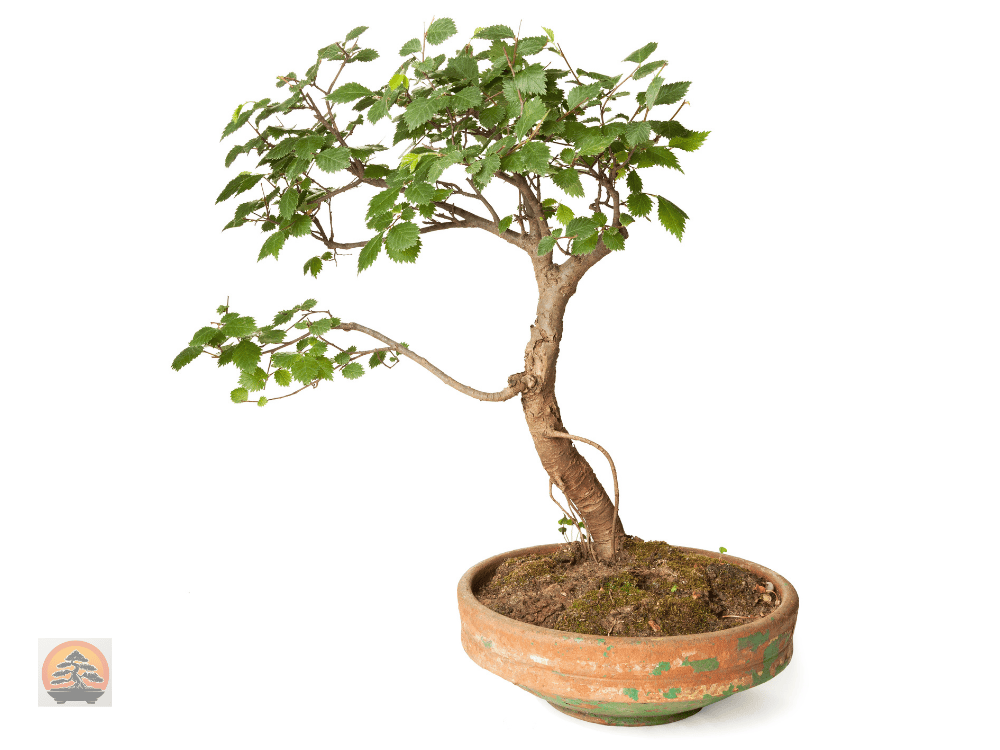
4.Hornbeam
Quiet and unassuming, the hornbeam rewards the patient grower with stunning structure and subtle strength.
Intro: While not flashy, the hornbeam is an underrated gem that teaches you the art of structure and proportion. It thrives in the hands of growers who value the long game, a perfect fit if you’re also interested in more minimalist, meditative types of bonsai trees, species like the Ficus Bonsai.
Watering: Requires steady watering during the growing season.
Lighting & Climate: Best suited to cool to temperate climates outdoors.

5.Juniper
Ah, the beloved juniper. Every beginner’s first crush. Hardy, forgiving, and stylish with a windswept look.
Intro: Junipers are not only the most iconic types of bonsai trees, they’re also one of the most resilient types of trees for bonsai in general. They’re perfect for practicing the “rule of 3” in styling, which you can explore in our Rule of 3 in Bonsai article. If you’re buying your first tree, be sure to check out our Bonsai Buying Guide.
Watering: Likes to dry slightly between waterings.
Lighting & Climate: Must be kept outdoors — full sun, good air circulation, and low humidity preferred.
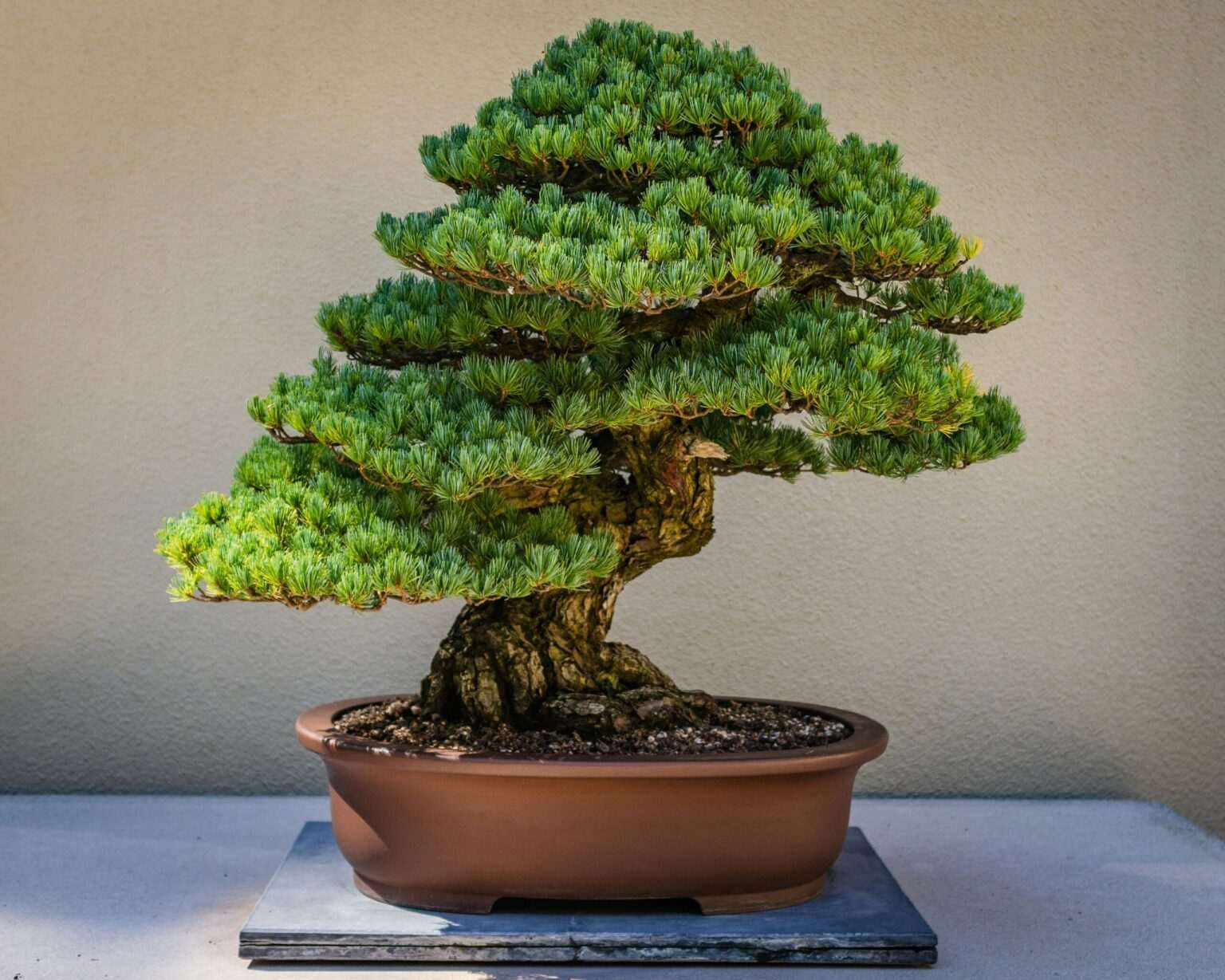
6.Black Pine (Pinus thunbergii)
Powerful. Masculine. Demands respect… and wiring.
Intro: A tree for bonsai warriors, the Black Pine stands tall among the most disciplined types of bonsai trees. It requires structure, vision, and mastery of wiring techniques — all of which you can explore in our Bonsai Pruning Guide.
Watering: Prefers deep watering when soil becomes dry.
Lighting & Climate: Best suited for outdoor environments with lots of direct sunlight.
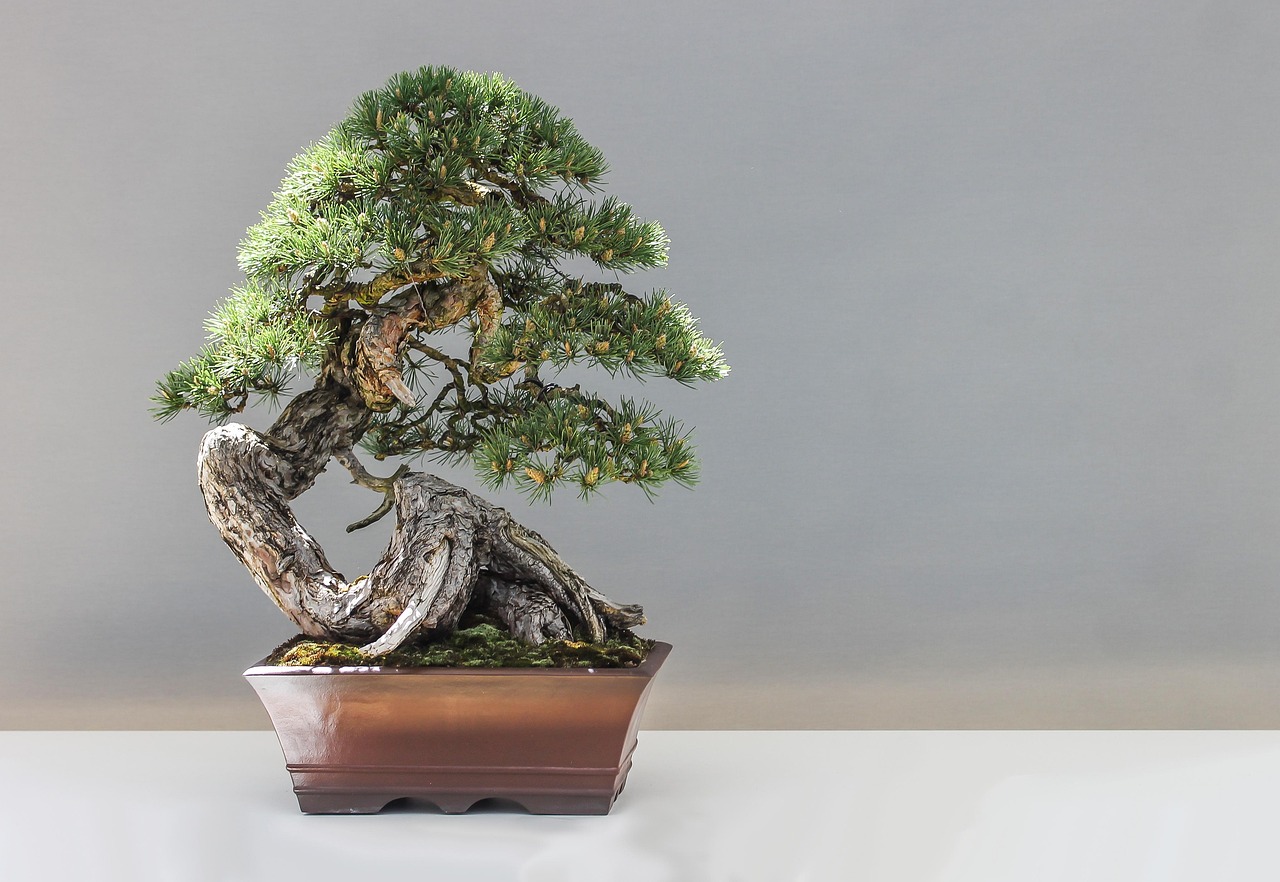
7.White Pine
The gentler cousin of the black pine. Softer needles, lighter energy.
Intro: If black pine is the sword, white pine is the flute. It is one of the more delicate and refined types of bonsai trees, it’s often used in forest-style compositions. Be sure to choose a bonsai pot that highlights its ethereal form.
Watering: Enjoys moist soil without waterlogging.
Lighting & Climate: Full sun in cooler climates, partial shade in warmer regions.
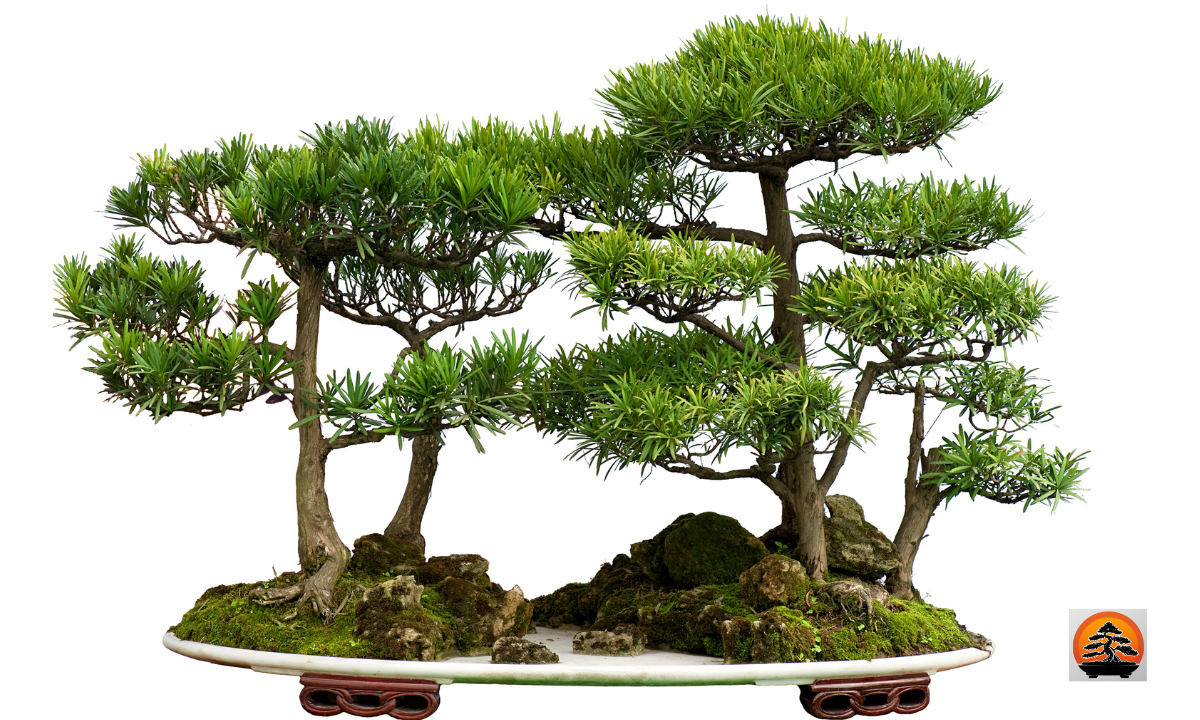
8.Cedar
Majestic and aromatic. The incense of the bonsai world.
Intro: Cedars are among the noble types of bonsai trees, requiring spacious root systems and a deep respect for their natural shape. Best suited for advanced growers who appreciate structure and flow. Browse our care guide collection to better understand this conifer’s rhythm.
Watering: Allow the soil to dry slightly between waterings.
Lighting & Climate: Prefers cooler, well-ventilated outdoor settings.
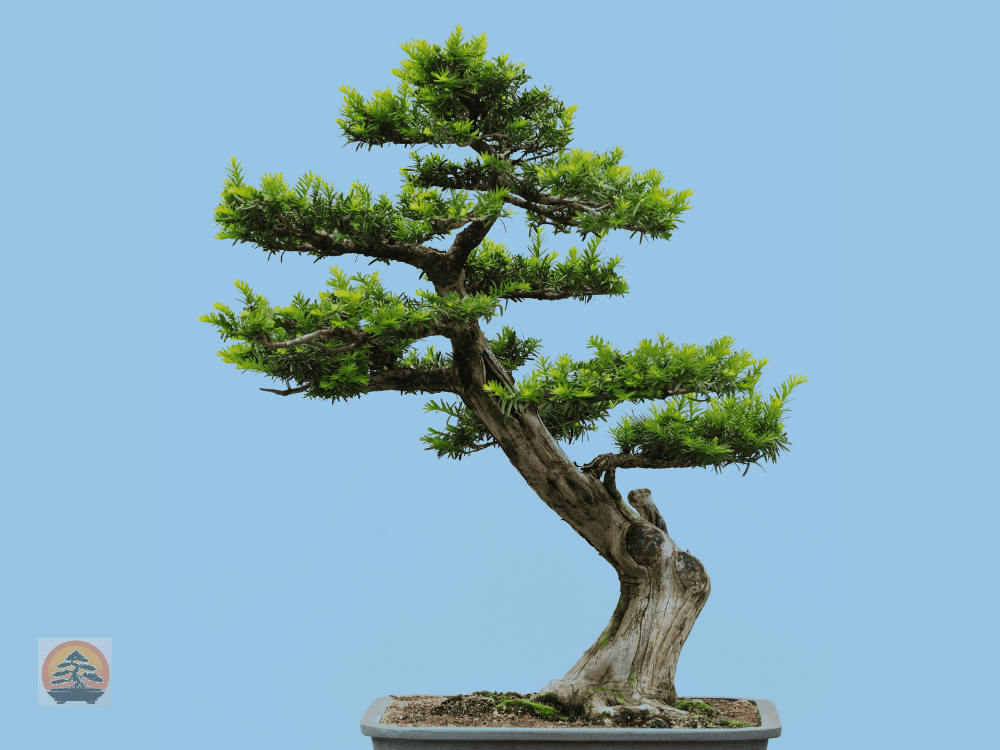
9.Yew (Taxus)
Ancient and wise, but a bit moody. Prune it wrong and it may sulk.
Intro: Yews are among the more dramatic types of bonsai trees, requiring the right environment and close observation. To avoid common pitfalls, revisit the essentials in our Beginner Bonsai Care Guide, especially the sections on pruning and maintenance. Yews reward patient growers who master bonsai pruning techniques and want to explore unique beginner bonsai trees.
Watering: Likes moist but well-drained soil.
Lighting & Climate: Hardy in cold climates and prefers partial to full sun outdoors.
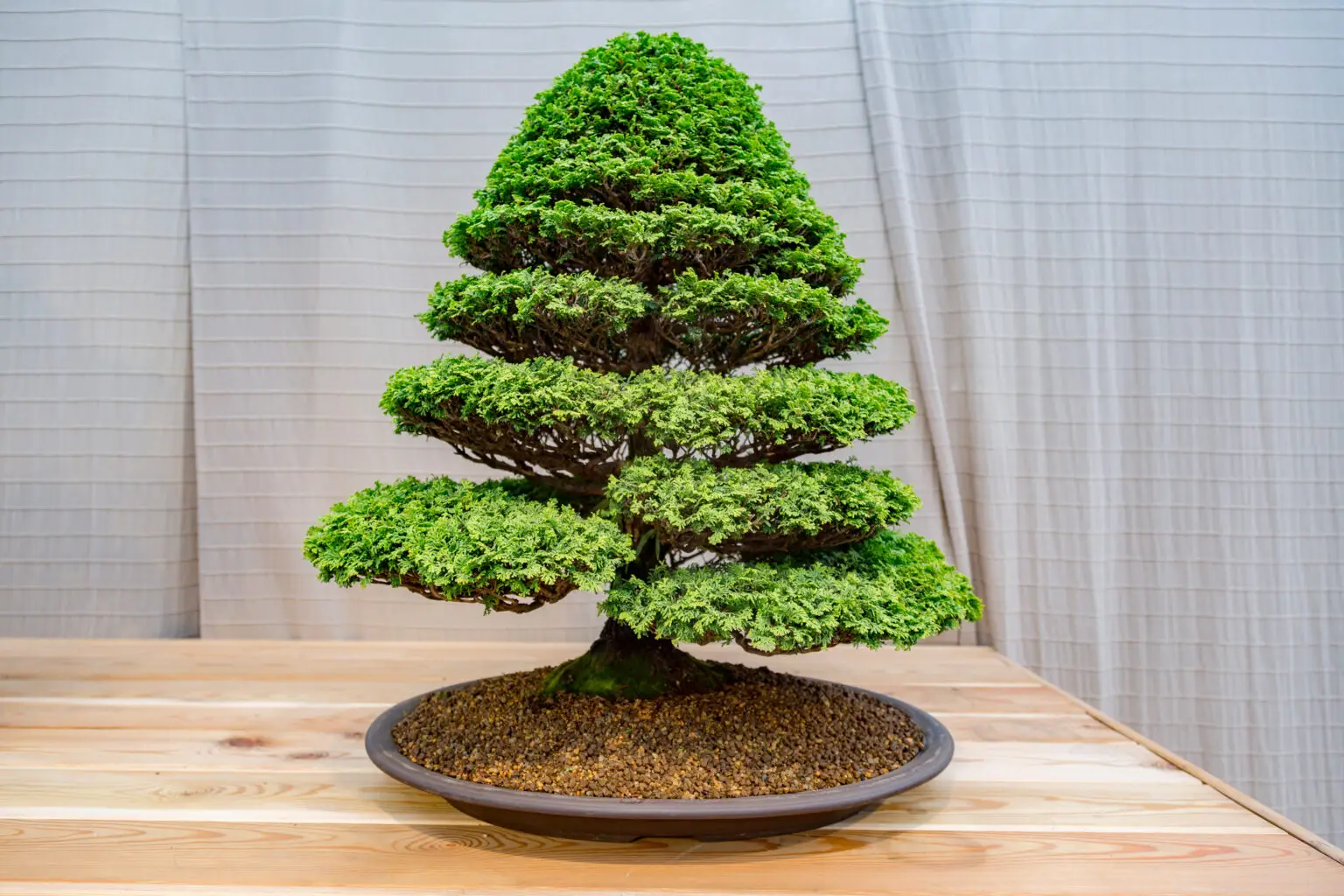
10.Hinoki Cypress (Chamaecyparis obtusa)
A refined evergreen with dense, fan-like foliage and a graceful, upright form.
Intro: Hinoki Cypress is prized for its slow-growing elegance and compact shape. It’s a favourite among purists and makes a fine addition to your bonsai display, especially if you’re exploring different types of bonsai trees that bring a sense of calm structure and longevity. All it takes is the right lighting and a touch of patience.
Watering: Likes consistent moisture and humidity.
Lighting & Climate: Keep outdoors in mild to cool climates; protect from frost.
For more, read our Hinoki Cypress Bonsai Guide
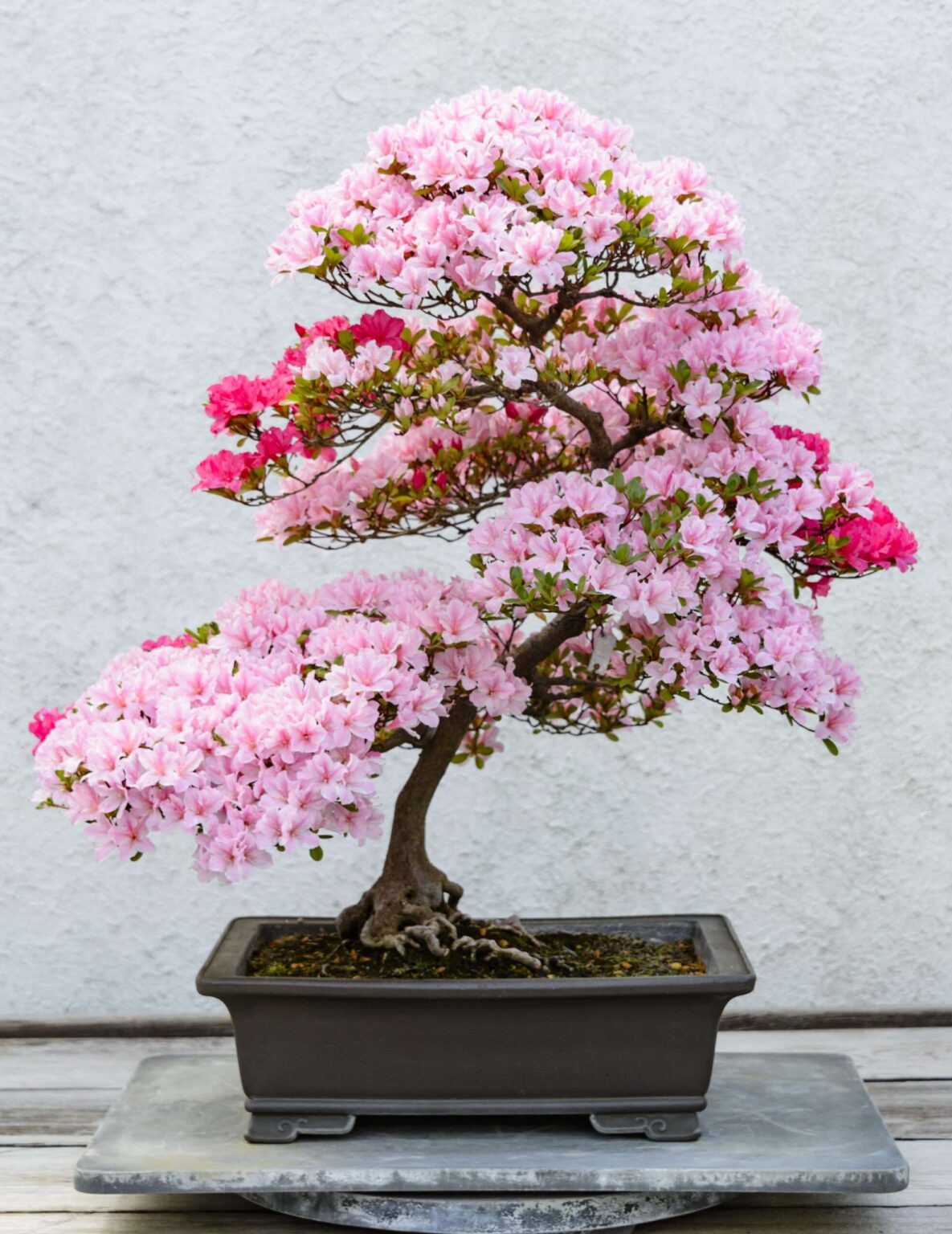
11.Azalea (Rhododendron)
A riot of colour in spring. Red, white, pink — she wears them all.
Intro: Azaleas add floral flair to any collection and are among the most vibrant types of bonsai trees can grow. But don’t be fooled — they need acidic soil, attentive care, and precise root pruning to thrive. Learn more in our Soil Mix Guide and keep her happy with gentle, intentional care.
Watering: Keep soil consistently moist, never soggy.
Lighting & Climate: Prefers partial shade in temperate to mild climates.
Read our full Azalea Bonsai Care Guide
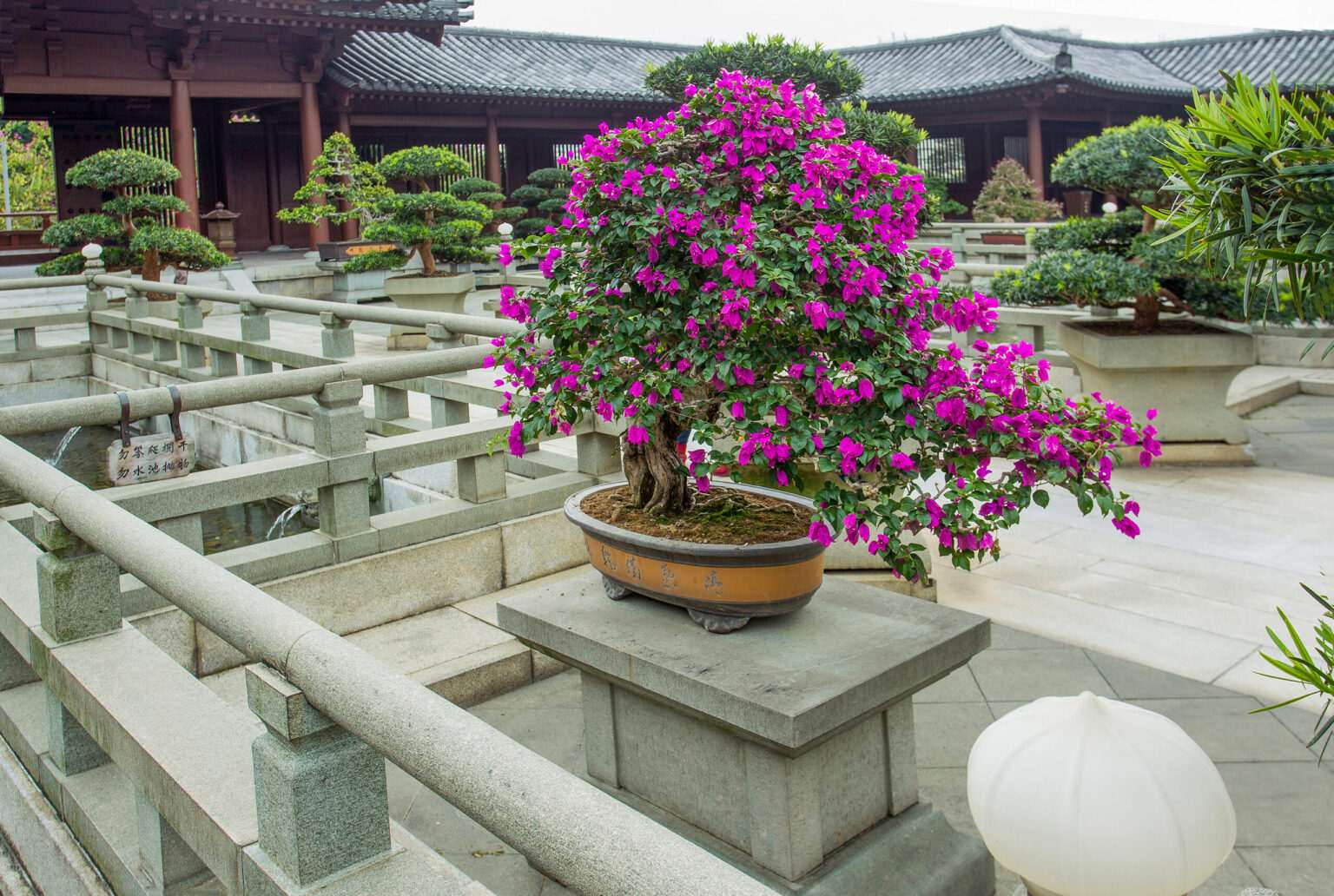
12.Bougainvillea
Tropical flair, paper-thin blooms, and a cheeky personality.
Intro: This tropical beauty thrives in warm climates and will reward you with vivid blooms. It’s one of the more vibrant types of bonsai trees, perfect for growers who love colour and character. If you’re in Australia, see how it fits into our local Australian Bonsai Trees species guide for optimal care tips.
Watering: Allow soil to dry slightly between waterings.
Lighting & Climate: Full sun, warm and frost-free zones.
Read our Bougainvillea Bonsai Care Guide
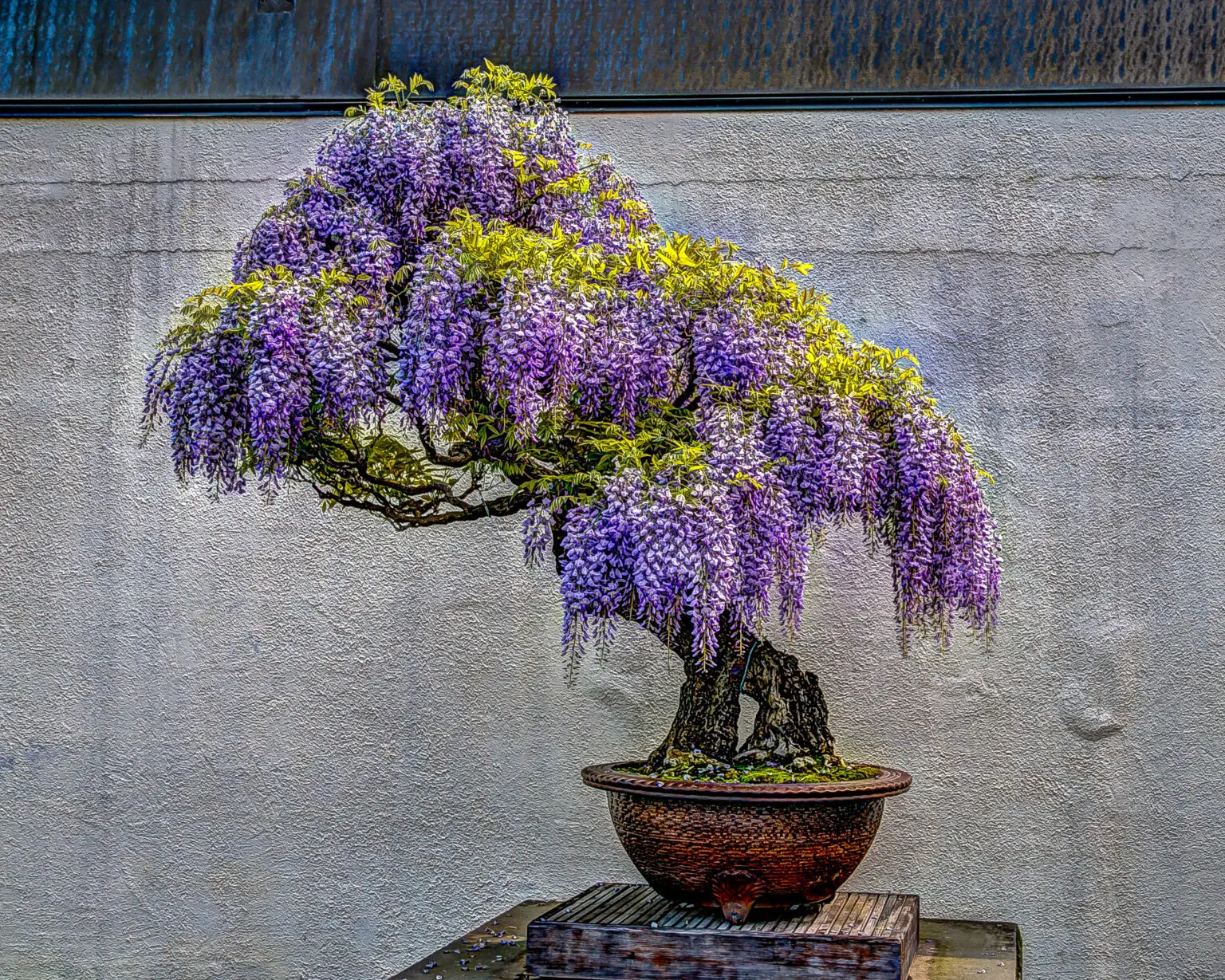
13.Wisteria
Ah… Wisteria. When in bloom, she is poetry. When not… she’s a handful.
Intro: Wisteria is one of the more captivating types of trees for bonsai, rewarding patience with its cascading purple blooms. As a romantic’s dream, it demands careful attention to root management, which you can master by reading our Pruning Guide. Proper bonsai care is essential to keep this species thriving through the seasons.
Watering: Requires heavy watering during the growing season.
Lighting & Climate: Full sun and temperate climate preferred.
Explore our Wisteria Bonsai Guide.
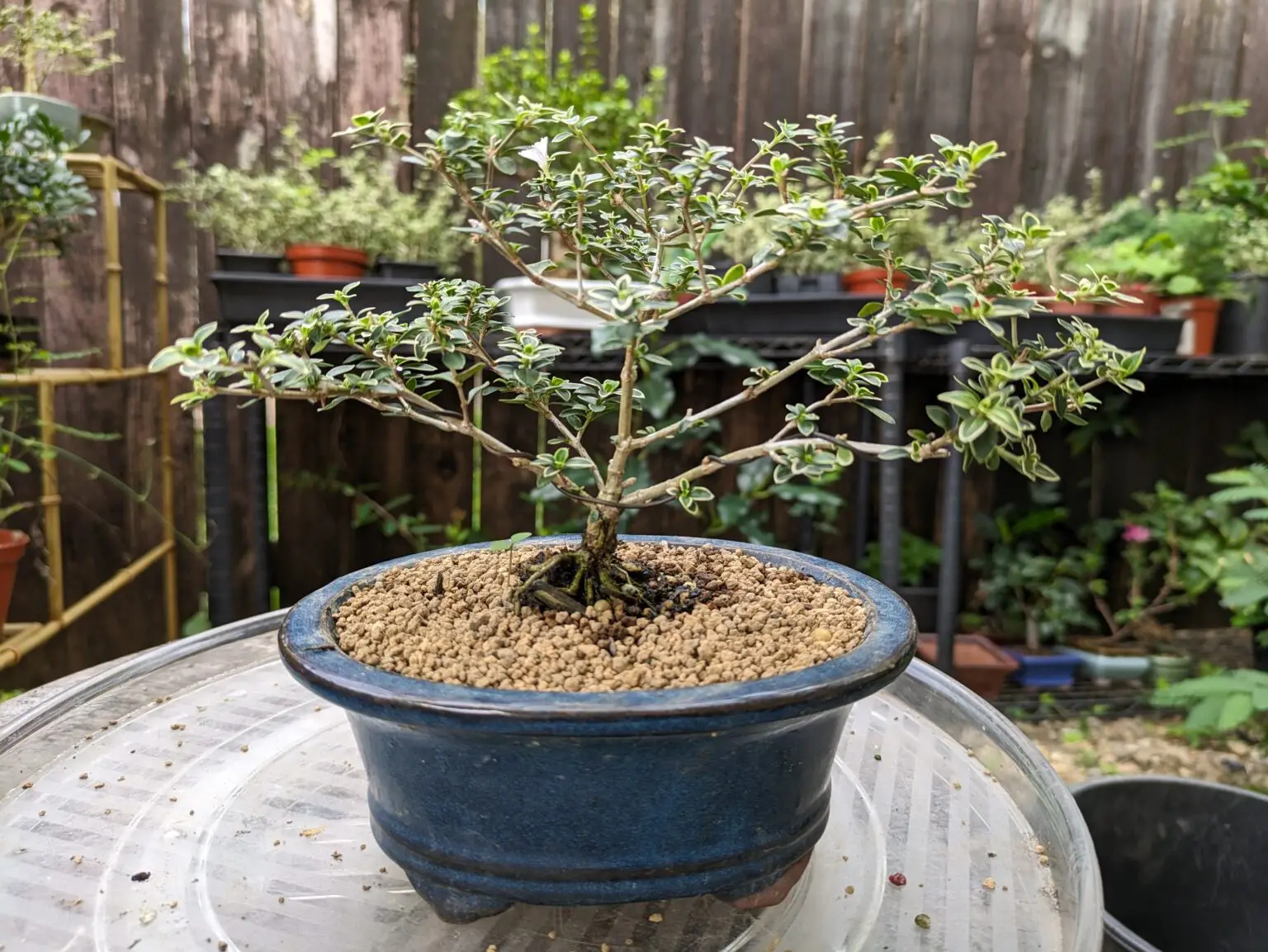
14.Serissa (Snow Rose)
Tiny white blossoms, like stars fallen into your bonsai pot.
Intro: Serissa is one of the more delicate types of bonsai trees, known for its temperamental yet stunning blooms. With careful watering and plenty of indirect sunlight, it will reward you with repeated flowering — especially when combined with our Bonsai Tree Care for Beginners guide and beginner bonsai tips.
Watering: Keep soil evenly moist; avoid fluctuations.
Lighting & Climate: Bright indirect light, mild indoor conditions.
Read more in the Serissa Bonsai Care Guide.
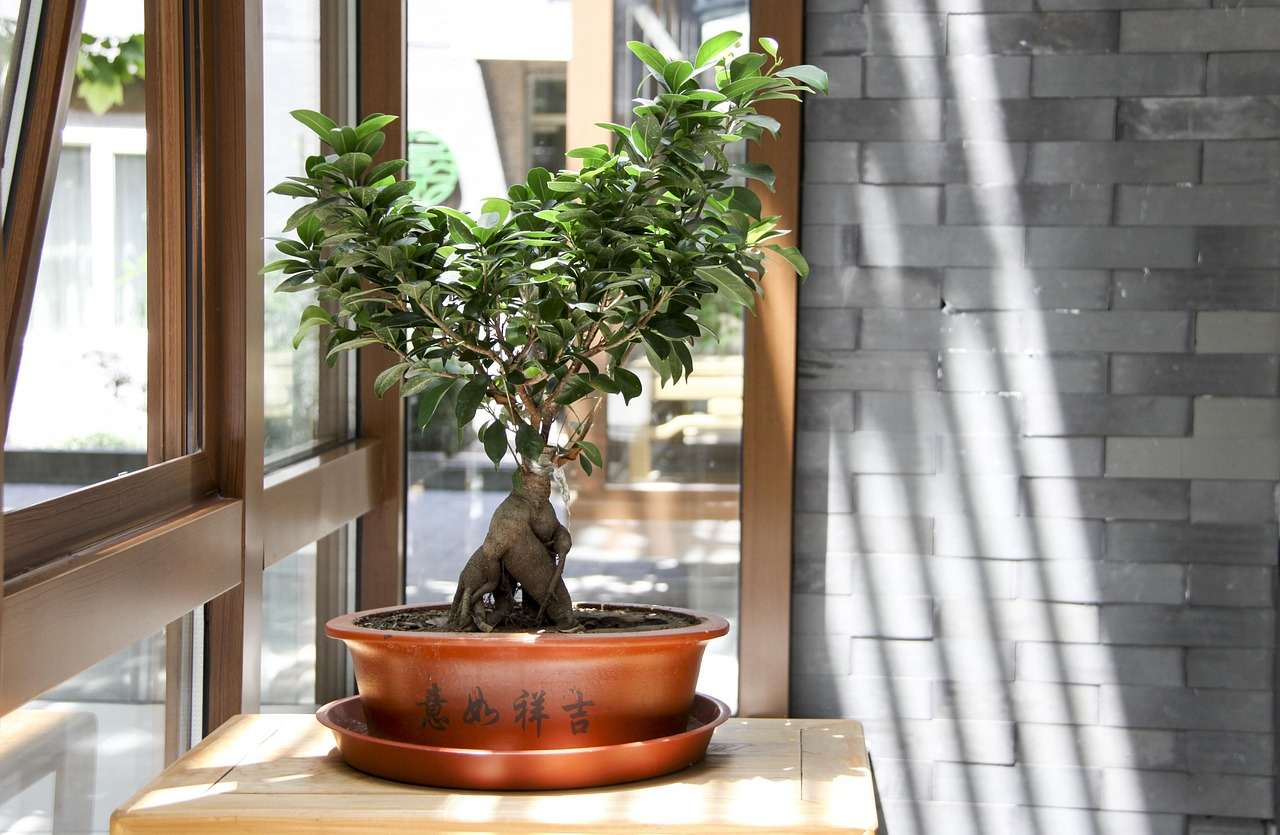
15.Ficus (Ficus retusa)
The indoor emperor. Tough, adaptable, and forgiving.
Intro: Among the popular types of bonsai trees, ficus stands out as an excellent choice for indoor bonsai enthusiasts. It thrives year-round indoors with the right care. For detailed advice on lighting, watering, and repotting, see our comprehensive Indoor Bonsai Guide.
Watering: Water when the topsoil feels dry.
Lighting & Climate: Bright indoor light, warm climate.
See the detailed Ficus Bonsai Care Guide.
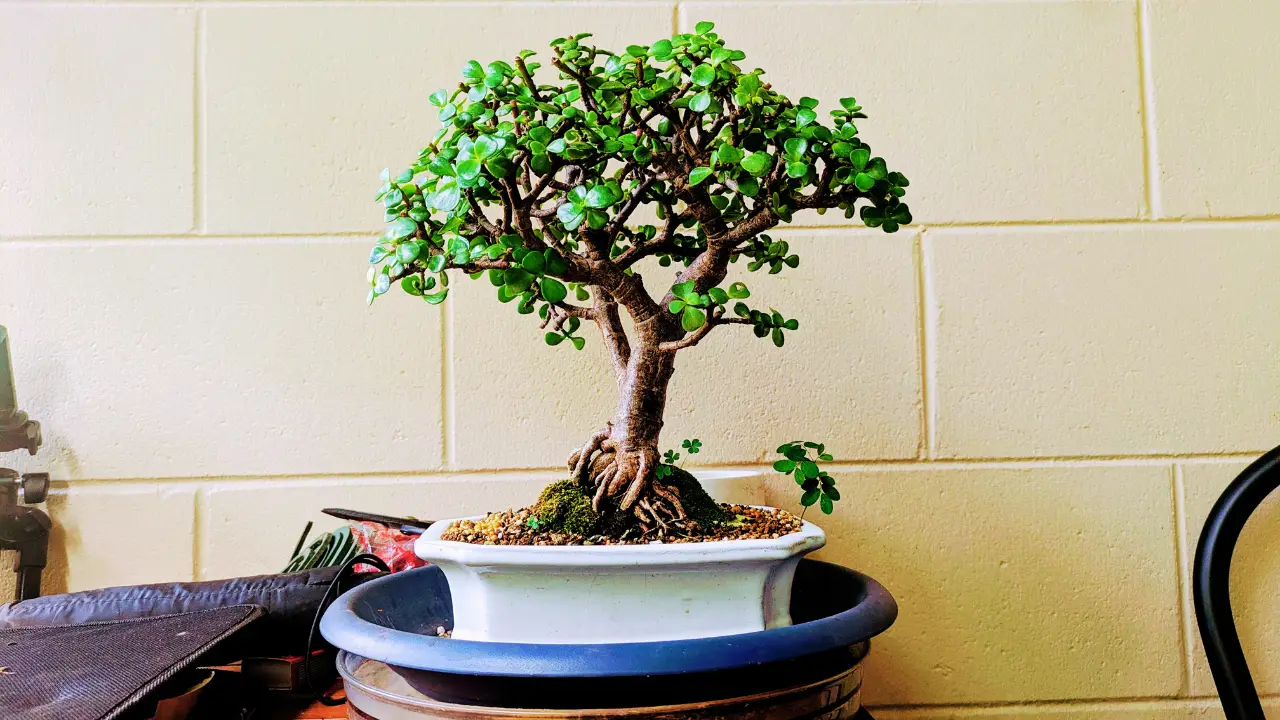
16.Jade Plant (Crassula ovata)
Technically a succulent, but plays the part of a bonsai with grace.
Intro: Jade bonsai is a minimalist’s dream — sculptural, low-maintenance, and easy to propagate. Just don’t overwater. New to bonsai? This one features in our Best Bonsai Trees for Beginners list.
Watering: Allow soil to dry completely before watering.
Lighting & Climate: Full sun, warm and dry climates.
Explore our Dwarf Jade Bonsai Guide.
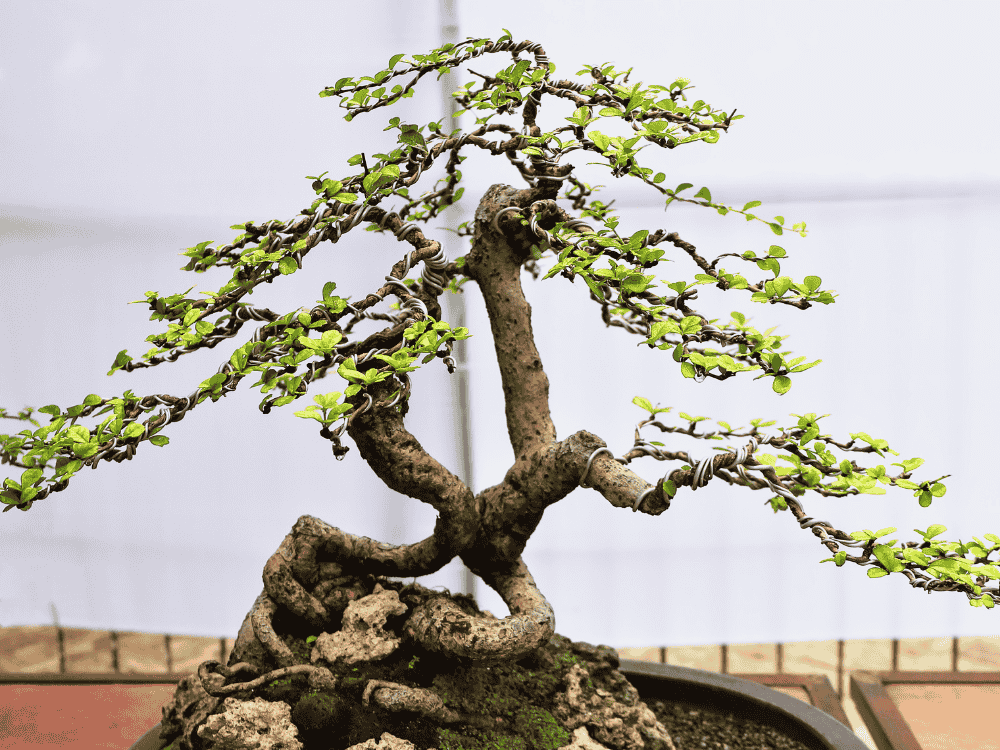
17.Fukien Tea (Carmona)
Tiny leaves, cute flowers… and a tendency to throw tantrums.
Intro: Often sold in shops but tricky to maintain, this species is best tackled after reading up on store-bought bonsai challenges in our Store Bought Bonsai Tree article. A fussy beauty, but worth the effort for persistent growers.
Watering: Requires consistent moisture; hates dry spells.
Lighting & Climate: Bright indoor light, warm and humid.
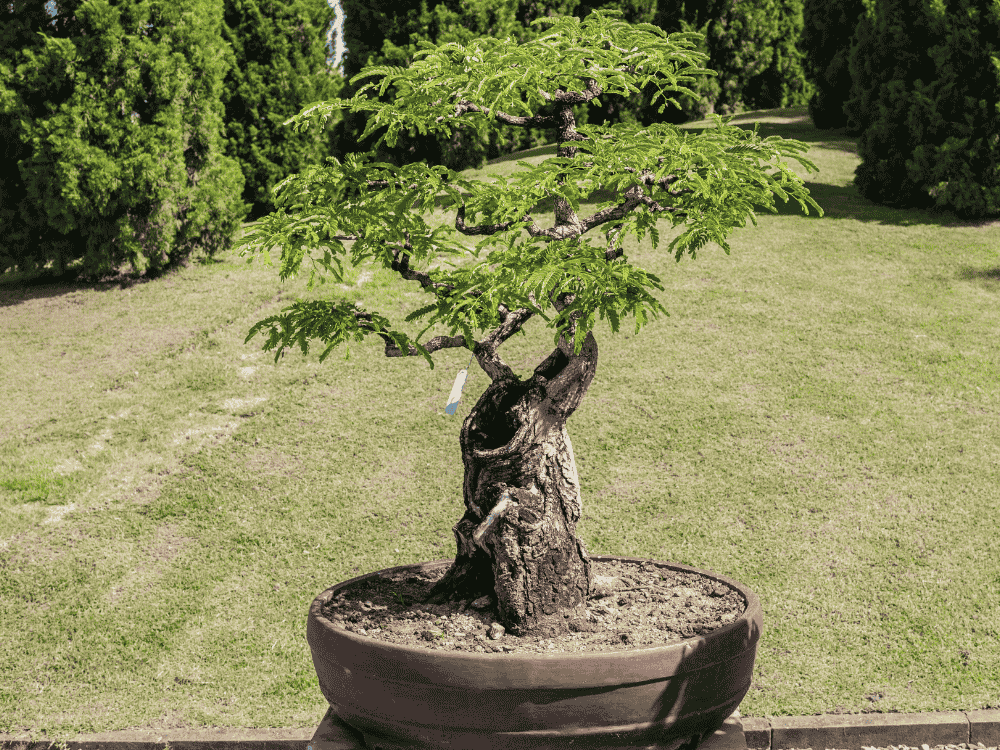
18.Tamarind
Tropical, twisty, and strangely elegant.
Intro: With sweet fruit and compound leaves, the tamarind is a fascinating tree to work with. Best for growers who enjoy intricate pruning.
Watering: Keep soil lightly moist.
Lighting & Climate: Needs lots of light; prefers warm climates.
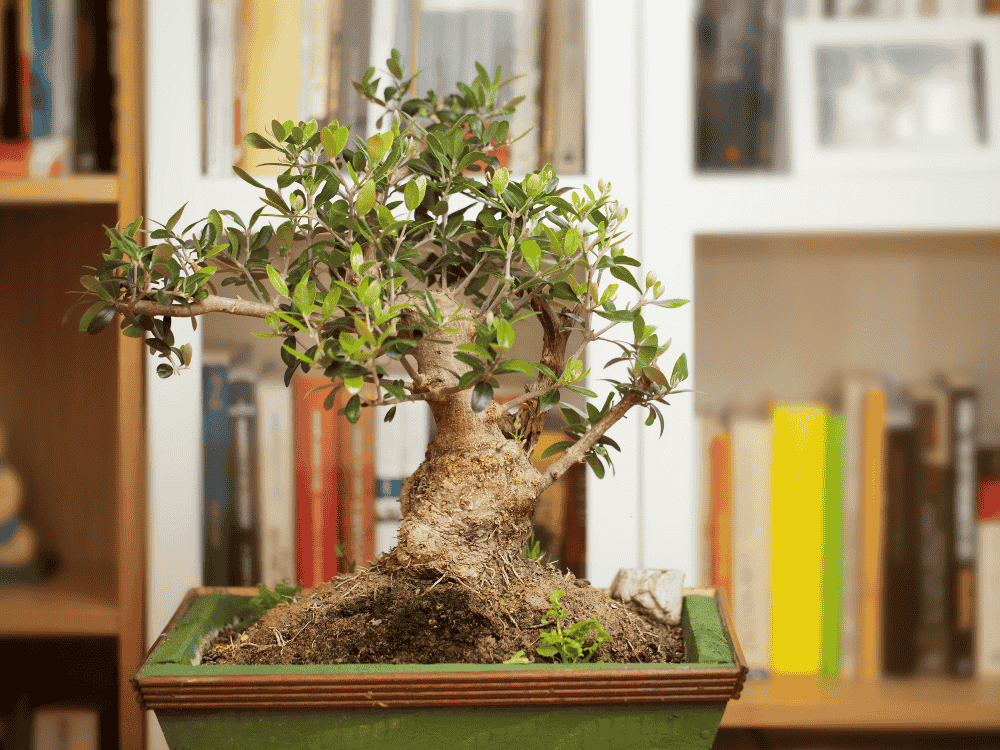
19.Olive Tree (Olea europaea)
Symbol of peace. Tree of resilience.
Intro: Ideal for Mediterranean climates, olive trees are slow-growing but striking. They appreciate dry soil — read our Bonsai Tree Soil Mix guide to get it just right.
Watering: Water deeply but infrequently.
Lighting & Climate: Full sun; dry, temperate climates.
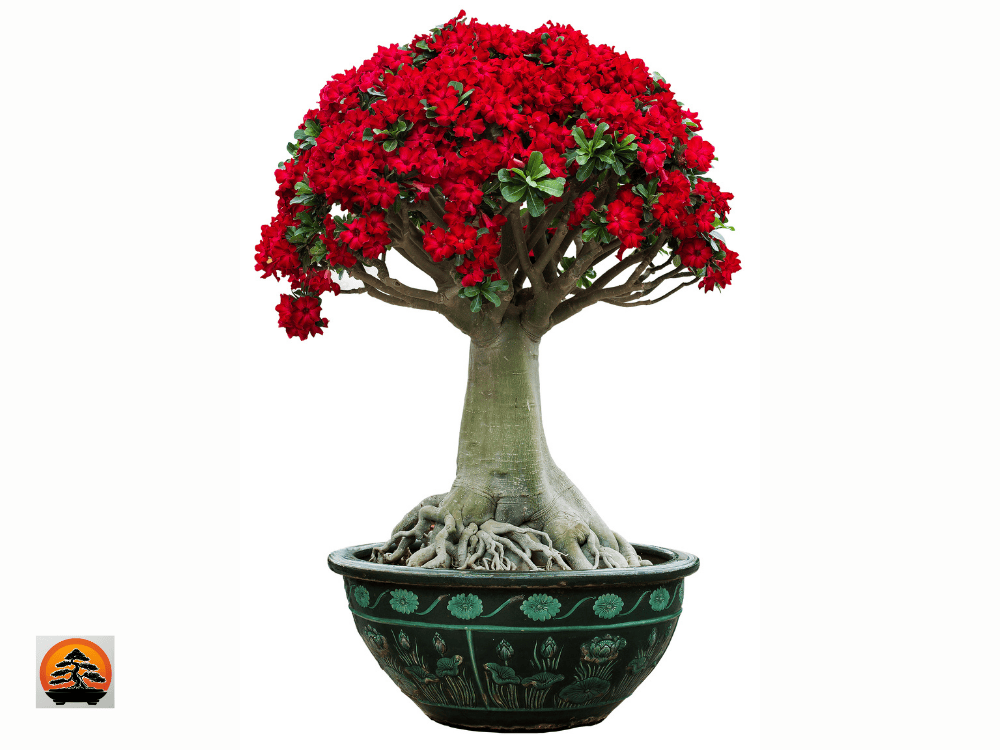
20.Desert Rose (Adenium)
Succulent meets bonsai. Thick trunk, dazzling flowers.
Intro: A drama queen of the desert. Ideal for warm rooms and south-facing windows. Check out our Indoor Bonsai Tree advice for display tips.
Watering: Minimal watering; let soil dry completely.
Lighting & Climate: Full sun, warm and arid.
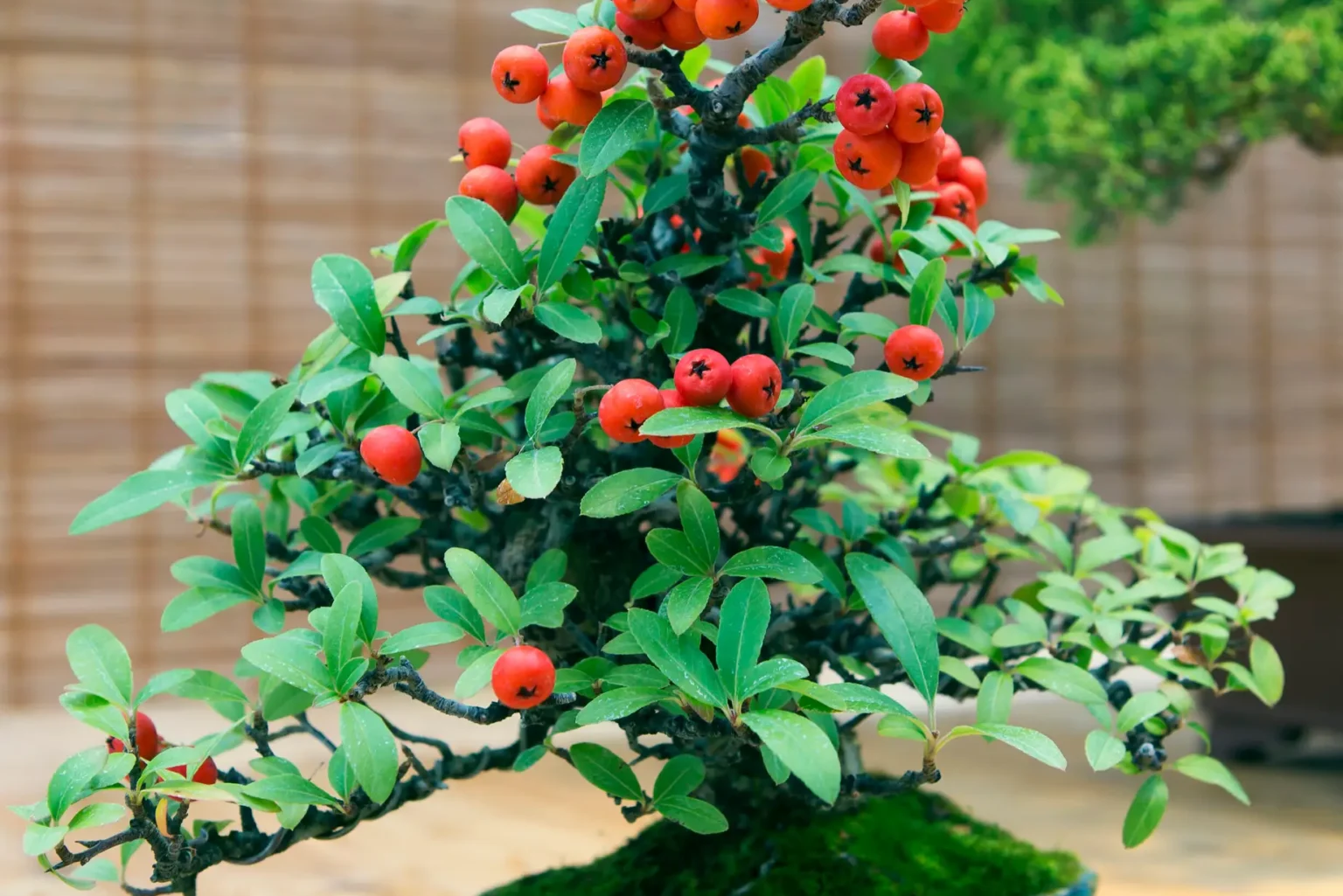
21.Cotoneaster
A hardy shrub with berries and delicate flowers.
Intro: Excellent for cascade styles and winter interest. Cotoneaster’s berries give seasonal charm. Pair it with our Root Pruning Guide to shape it like a pro.
Watering: Moderate watering; avoid soggy soil.
Lighting & Climate: Full sun to partial shade; cool to temperate zones.
See the full Cotoneaster Bonsai Care Guide.
Recommended Tools & Products
If you’re just getting started, these basics will do:
Click below to learn which are the best beginner bonsai tools you will need.
Bonsai Care Guide FAQ
What trees are best for bonsai?
Many tree species can be trained as bonsai, but the best ones have small leaves, strong branching potential, and can handle pruning. Popular choices include Japanese Maple, Chinese Elm, Juniper, Trident Maple, and Ficus. For flowering flair, Azalea and Bougainvillea are fantastic options. You can explore our full list of beginner-friendly bonsai trees to get started.
What is the Rule of 3 in bonsai trees?
The “Rule of 3” is a design principle that helps create balance and visual flow in your bonsai. It refers to spacing and styling — such as three main branches, three angles of view, or the division of trunk sections. Read our full article on the Rule of 3 in Bonsai to understand how to apply it to your trees.
What tree can you use for bonsai?
Technically, almost any woody plant with a strong root system and the ability to survive pruning can be used as a bonsai. However, not all are practical or beautiful in miniature form. Stick to trees like Juniper, Maples, Pines, Elms, and Ficus if you’re just starting out.
What are the best trees for bonsai in Australia?
Australia’s climate supports a wide range of bonsai trees — both native and exotic. Great choices include the Australian Bottle Tree, Callistemon (Bottlebrush), Trident Maple, Bougainvillea, and Juniper. For a full breakdown, visit our Australian Bonsai Trees Guide.
Can I turn any tree into a bonsai?
In theory, yes — but in practice, not every tree makes a good bonsai. Some trees have overly large leaves, fast-growing roots, or fragile branching. The best bonsai candidates are trees that respond well to pruning, have strong structure, and thrive in containers. See our guide on choosing your first bonsai tree for more tips.
What is a good bonsai tree for beginners?
Chinese Elm, Juniper, Ficus, and Jade are excellent beginner bonsai trees. They are forgiving, hardy, and adapt well to different care routines. For a curated list, check our roundup of the best bonsai trees for beginners.

Final Thoughts from Master Mori
Young seedling,
You have wandered through the forest of miniature trees, young sapling. You have seen the fierce pines, the delicate maples, the cheerful jade, and the occasionally grumpy Fukien Tea. And now you wonder, which tree shall I choose?
Let me tell you a secret: it is not only the tree that becomes bonsai, it is you.
Each branch you prune is a lesson in letting go. Each root you trim is an act of gentle courage. And each watering? A quiet conversation between you and your tree. Some species are forgiving, like Ficus. Others are demanding, like Wisteria. All of them, however, teach you something about yourself.
If you’re just beginning, don’t fret over perfection. Start with a hardy friend like Chinese Elm, Jade, or perhaps the noble Juniper. Grow in patience. Study the rule of 3. Avoid the common traps new growers face — and when in doubt, I am never far. You’ll find my words scattered across the pages of this humble guide.
And remember, young gardener:
It is not how small the tree is, but how deeply it roots your heart.
Now go, water with care, prune with purpose, and above all…
walk the path of bonsai.
Master Mori
Don’t leave empty handed. Subscribe to our newsletter and download our free guide. Master Mori’s Will Show You the Way
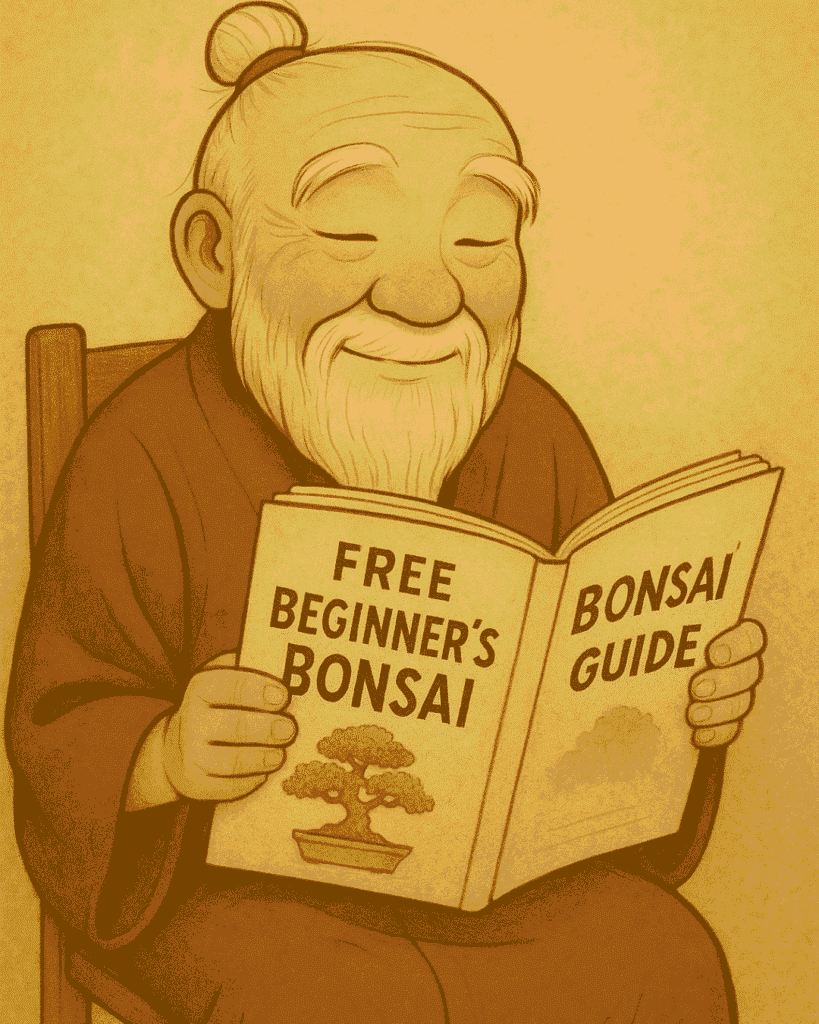
Explore More Bonsai Wisdom — All Articles
Take the next step on your bonsai journey. Below you’ll find every article we’ve published, thoughtfully grouped for easy discovery.
